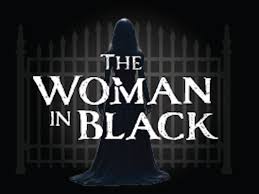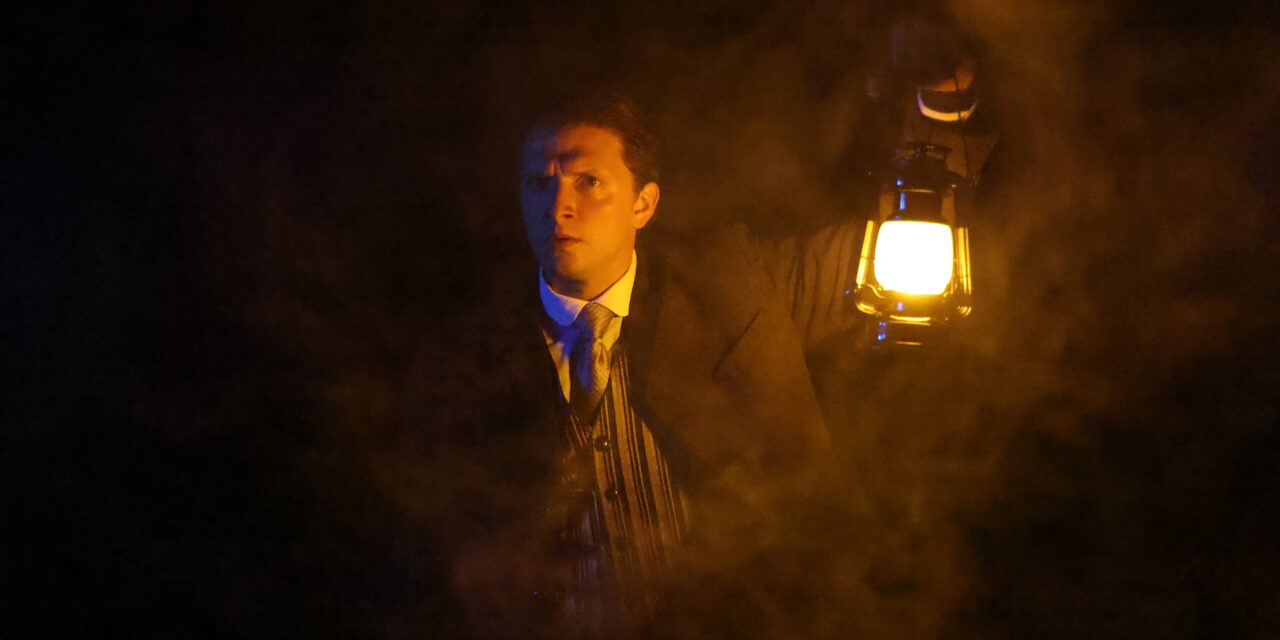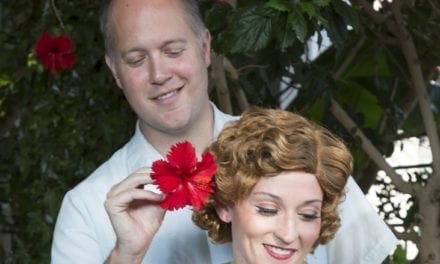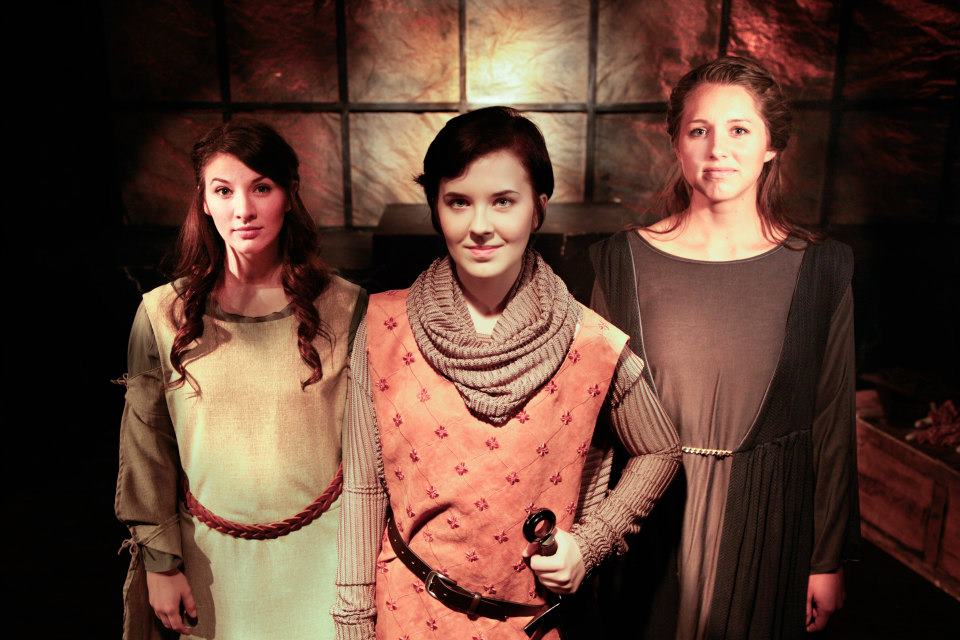PROVO — As I walked out of the Covey Center this past Thursday, my heart was still pounding. I had just seen the opening night of “The Woman in Black,” and I was amazed. Not only was the show a good piece of theatre, it was a good piece of horror.
The Covey Center’s “The Woman in Black” is a delightfully suspenseful show full of surprises. Adapted by Stephen Mallatratt from the book by Susan Hill, it is a meta-horror play. Mr. Kipps, haunted by his past, enlists the help of an actor to tell his story through the power of the theatre. The audience learns the eerie tale through a series of rehearsals as the characters perform it, helping the tortured Mr. Kipps come to terms with his grief. The stacked story structure of a play within a play proves highly engaging, especially considering the small, two-man cast.
Please note: While I do call this a horror play, it is not nightmare-inducing. There were young teens in the audience when I went, and they seemed to thoroughly enjoy it.
Speaking of the two-man cast, any show with such a small cast can be a challenge for both cast and audience. It is easy to imagine the strain that actors can feel, burdened with long monologues and nearly no breaks during the performance. Additionally, this script in particular contains multiple characters to be played by only a few, adding to the comedy, diversity, and challenge of the piece. However, all the actors in “The Woman in Black” showed no sign of struggle. Rather, they thrived.
Matthew DelaFuente, as “Actor”, immediately set the tone of the show with his booming energy onstage. DelaFuente is tasked with many long scenes to himself and tackles them with the skill of a veteran thespian. His diction is crisp, his delivery informed and varied, his arc of the character clear in both body and speech. In multiple scenes, DelaFuente must represent his frightened character playing another character, reminding the audience of the play within the play. This can be a confusing task, but DelaFuente’s moments of eye-bulging dread that quickly turned to regrouping commitment were artfully placed. This show is a success because it can easily rest on the shoulders of DelaFuente.
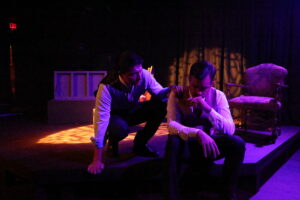
Woman in Black plays at the Covey Center through October 21. | Photo Credit: Covey Center for the Arts.
Having said that, DelaFuente’s energy is definitely matched on stage by his castmate. Samuel Wright, while more often known for his comedic roles, grounds his “Kipps” with a nervous stutter and weary gait. Wright adeptly adopts several accents throughout the course of the play, making embodying various characters seem easy. Wright and DelaFuente share a brotherly chemistry that made me care for their characters quickly. Both actors are terrifyingly terrific, especially together.
The acting prowess shows that the direction for this show was a serious step up for the Covey. Director Morgan Gunter expertly balances the dialogue-heavy portions of the script with the exciting frights. Whenever I would feel myself starting to get lost in all the words, the dynamic direction would quickly grab my attention again with engaging blocking. Even in the face of limited set pieces and a small black-box theatre, Gunter made sure every inch of the space was imaginatively used, ever expanding the world of the play to the audience. I praise this not just for its effectiveness to the audience that I was in, but also the imaginary audience that the two characters were also considering. Through his direction, Gunter showcased just how well he understood the layered script of “The Woman in Black.”
The Brinton Black Box theatre grew larger throughout the show not just due to the lively action in the space, however. The sound design by Robert Seely and Mark Pitt increases the size of the space and the size of the spooks. While most of the scares are visual, there were several carefully placed sounds that made me jump in my seat. The design, along with the impeccably timed cues, (done by Stage Manager Rachel Barney), cultivates an atmosphere of suspense and terror. Additionally, the sound design includes multiple voice overs, which while not often seen in a live theatre setting, diversifies the action even further, creating an even more interesting show.
Returning to the visual aspects of the show, Jessica Moody’s costume, hair, and makeup designs shine onstage. While very practical for the ever-changing roles of “Kipps,” Moody doesn’t let costume practicality overrule the (rightfully) prominent creepy aesthetic. This aesthetic is also strengthened by Spencer Powell’s lighting design. With beautiful stained glass gobos, mesmerizing color choices, and a hair-raising balance of dark and bright, the lighting is essential to the wicked atmosphere. Prop master Gabi Pack and scenic designers Robert Seely and Spencer Powell smartly utilize wooden building block pieces that can double as chests, tables, and more. The challenge for the designers was to bring the small space to life and then to gradually spookify it. Needless to say, they succeeded.
Outside of theatre, the horror genre often relies heavily on jump scares, heavy editing, and superimposed effects. It can be a challenge to live up to the modern expectations of providing a thrilling time in the theatre, where everything is physical and live. While it may be difficult for others, the Covey Center’s “The Woman in Black” proves that they are up to the challenge. Alarmingly acted, devilishly directed, and daringly designed, “The Woman in Black” is a show you’ll be dying to see twice!
(P.S. To all the surprises that I didn’t name here, all I’ll say is: Bravo!)
